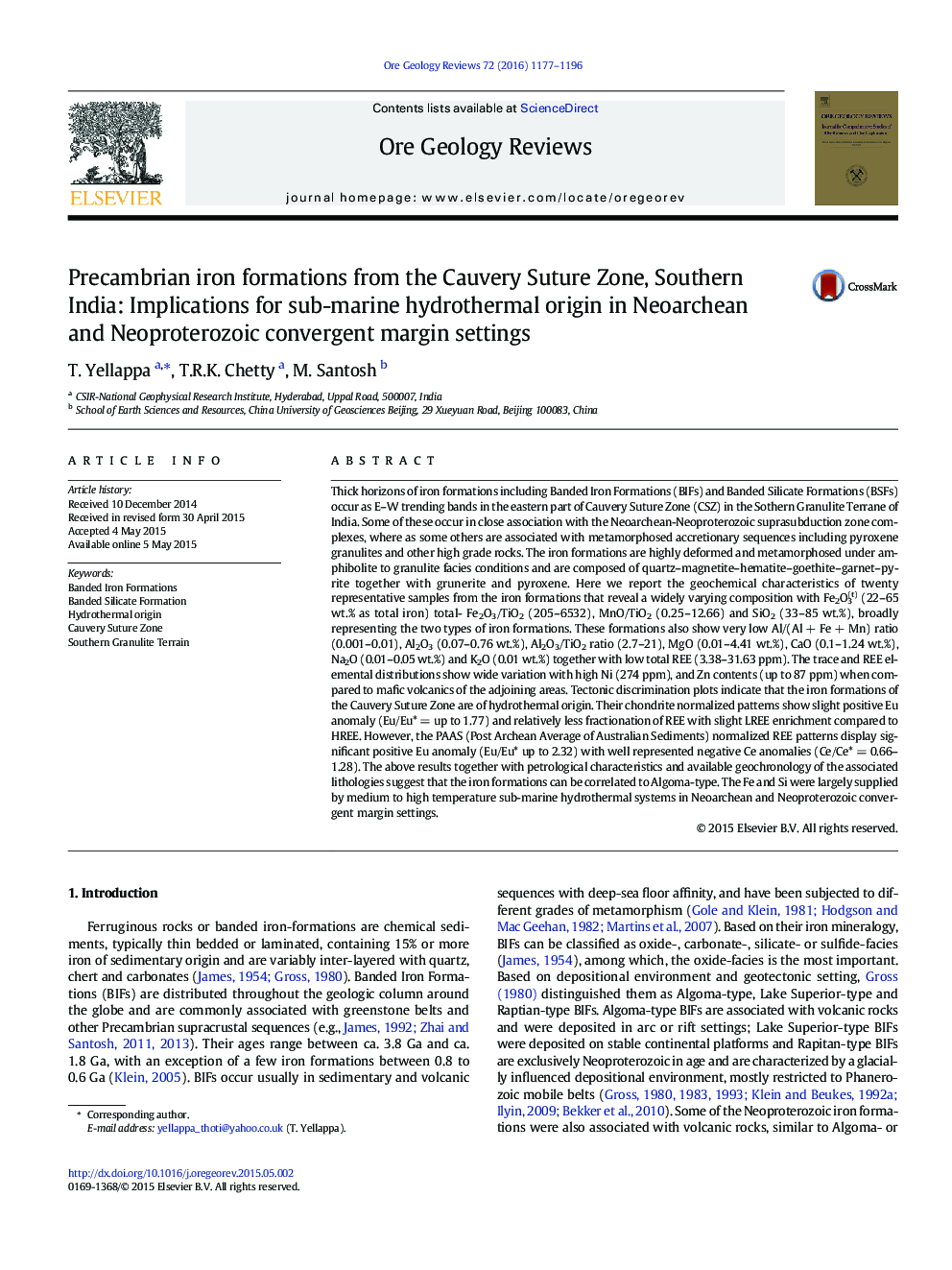| کد مقاله | کد نشریه | سال انتشار | مقاله انگلیسی | نسخه تمام متن |
|---|---|---|---|---|
| 4697233 | 1351867 | 2016 | 20 صفحه PDF | دانلود رایگان |

• The iron formations from the CSZ are associated with Neoarchean to Neoproterozoic suprasubduction zone complexes.
• Geochemical features suggest origin of BIF from sub-marine hydrothermal solutions.
• The iron formations are correlated to Algoma-type BIF.
Thick horizons of iron formations including Banded Iron Formations (BIFs) and Banded Silicate Formations (BSFs) occur as E–W trending bands in the eastern part of Cauvery Suture Zone (CSZ) in the Sothern Granulite Terrane of India. Some of these occur in close association with the Neoarchean-Neoproterozoic suprasubduction zone complexes, where as some others are associated with metamorphosed accretionary sequences including pyroxene granulites and other high grade rocks. The iron formations are highly deformed and metamorphosed under amphibolite to granulite facies conditions and are composed of quartz–magnetite–hematite–goethite–garnet–pyrite together with grunerite and pyroxene. Here we report the geochemical characteristics of twenty representative samples from the iron formations that reveal a widely varying composition with Fe2O3(t) (22–65 wt.% as total iron) total- Fe2O3/TiO2 (205–6532), MnO/TiO2 (0.25–12.66) and SiO2 (33–85 wt.%), broadly representing the two types of iron formations. These formations also show very low Al/(Al + Fe + Mn) ratio (0.001–0.01), Al2O3 (0.07–0.76 wt.%), Al2O3/TiO2 ratio (2.7–21), MgO (0.01–4.41 wt.%), CaO (0.1–1.24 wt.%), Na2O (0.01–0.05 wt.%) and K2O (0.01 wt.%) together with low total REE (3.38–31.63 ppm). The trace and REE elemental distributions show wide variation with high Ni (274 ppm), and Zn contents (up to 87 ppm) when compared to mafic volcanics of the adjoining areas. Tectonic discrimination plots indicate that the iron formations of the Cauvery Suture Zone are of hydrothermal origin. Their chondrite normalized patterns show slight positive Eu anomaly (Eu/Eu* = up to 1.77) and relatively less fractionation of REE with slight LREE enrichment compared to HREE. However, the PAAS (Post Archean Average of Australian Sediments) normalized REE patterns display significant positive Eu anomaly (Eu/Eu* up to 2.32) with well represented negative Ce anomalies (Ce/Ce* = 0.66–1.28). The above results together with petrological characteristics and available geochronology of the associated lithologies suggest that the iron formations can be correlated to Algoma-type. The Fe and Si were largely supplied by medium to high temperature sub-marine hydrothermal systems in Neoarchean and Neoproterozoic convergent margin settings.
Journal: Ore Geology Reviews - Volume 72, Part 2, January 2016, Pages 1177–1196